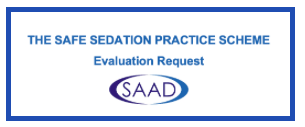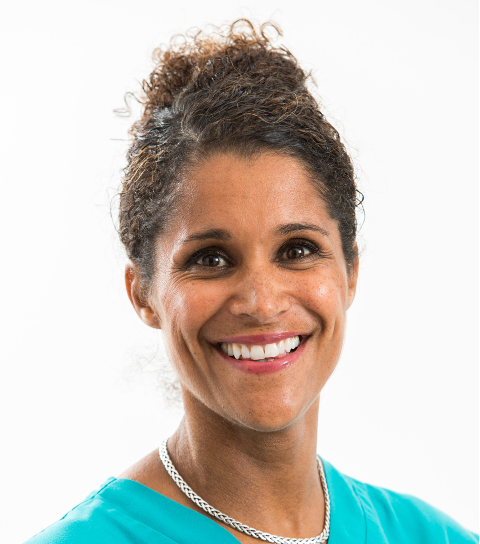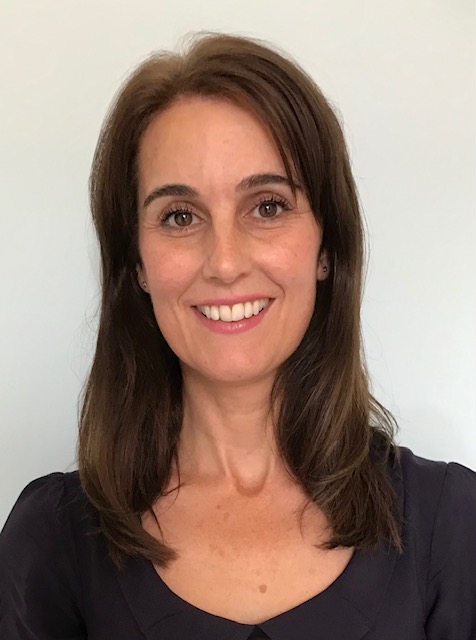We have some excellent poster presentations on display in the Atrium - well worth a look!
The winners of the SAAD Poster Presentation Prizes will be announced just before lunch.
Factors determining the need for general anesthesia to deliver dental treatment for adults with intellectual and developmental disabilities
Hassan Abed
Background: To investigate factors determining the need for general anesthesia (GA) to deliver dental treatment for adult people with intellectual and developmental disabilities (IDD).
Methods: This study involved a retrospective review of medical records of adult patients with IDD who received dental treatment under GA at Tabuk Specialist Dental Center, Saudi Arabia between 2018 and 2020. Demographic characteristics and dental-related details, level of cooperation and methods of delivering dental treatment were collected.
Results: A total of 86 adult patients with IDD were included. The mean age of the study participants was 34.8 years (SD 6.5), and the majority were males (n=47, 54.7%). Eighteen patients had aphasia (20.9%), 16 had epilepsy (18.6%), and 10 had cerebral palsy (11.6%). Most dental treatments delivered were complex dental treatments (n=39, 45.3%) followed by dental extraction (n=25, 29.1%) and non-surgical periodontal therapy (n=22, 25.5%). Females had higher odds of undergoing GA compared to males (OR=6.79, 95% CI: 1.62 – 28.41). Furthermore, patients who had aphasia had higher odds of undergoing GA compared to patients who have no medical conditions (OR=14.03, 95% CI: 1.05 – 186.7).
Conclusion: Being female or having aphasia are independent factors related to the need for GA to deliver dental treatment for Saudi adults with IDD.
Would you travel over two-hundred miles for a front tooth?
Natalie Bradley
Sedation and Special Care Dentistry, Guy’s and St Thomas’ Hospital, London
Case Report:
A 39 year old male was referred to a Sedation and Special Care Dentistry (SSCD) Department in London for assessment for prosthetic replacement of an UL2.
Medical history included Type 1 Diabetes and a traumatic brain injury sustained during a road traffic accident, thought to be as a result of the patient having a hypoglycemic seizure whilst he was driving. The patient lives at home with his wife who is his full time carer. He lacked capacity to consent and was unable to tolerate dental treatment other than a brief examination.
The UL2 was extracted during a General Anaesthetic at his local Community Dental Services (CDS) in the East of England as a result of caries. His wife was very concerned about the resulting aesthetics and believed that the patient would have wanted to have this restored as prior to his brain injury he was a regular dental attender and cared for his oral health.
His local CDS were not able to offer treatment under sedation, therefore the patient undertook the 200 plus round journey to London for a course of treatment over 6 visits, which resulted in prosthetic replacement of the UL2 with a resin retained bridge and composite restorations of two teeth under intravenous midazolam sedation.
Conclusion: This case highlights the geographical variation in the provision of sedation services within Special Care Dentistry and how this modality can ensure equitable quality of dental care for people with Additional Needs.
Safe sedation following the COVID-19 pandemic: the impact of lockdown on BMI
Rachel Cruickshank BDS(Hons), BSc (Hons), MFDS RCPSG
Fiona Wright BDS (Hons), MFDS, DipConSed
Gemma Gaw BSc (Hons), BDS, PhD
Providing safe sedation in a dental setting is achieved by careful patient selection of ASA 1 and 2 individuals, specifically those with a BMI <35kg/m2 . The impact of lockdown upon patient health and weight cannot be ignored. Following the prolonged pandemic restriction on dental practice, many patients may require re-assessment to confirm their continued suitability for sedation in a dental setting.
An audit of patient parameters was undertaken for 20 patients who were assessed as suitable for Intravenous sedation within the OMFS department. Parameters including height, weight, BMI, and vital signs were recorded. Re-assessment has highlighted an increasing number of younger and otherwise healthy patients, who present around, or above, the safe BMI threshold. It also highlighted potential confounding anatomical complicating factors, such as airway management and poor venous access.
This has highlighted an increasing number of patients, who, because of the increased wait time between initial assessment and appointment, are deemed not suitable for conscious sedation in the outpatient setting. Sedation re-assessment creates an opportunity for intervention and signposting of support for patients with a recently increased BMI. Our findings highlight the importance of sedation re-assessment following a restriction in service provision to ensure patient safety.
Marsupialisation of a mandibular cyst on a teenager under Intravenous Sedation
David Drysdale
Background: Intravenous sedation (IVS) in children aged twelve to sixteen has its place, and provides an alternative to treatment under general anaesthesia (GA). We present a case of a fourteen-year-old, who was referred by his dentist with a significant right sided mandibular swelling. A radiograph (DPT) and cone beam computed tomography (CBCT) were taken, indicating a large mandibular cyst. This was at a time, when the country was under a national lockdown and GA services were restricted.
Treatment: Options were discussed for the management of the cyst and dental anxiety. The cyst was marsupialised successfully utilising IVS. IVS was provided as per recognised guidance and following an established titration protocol. 5mg Midazolam was sufficient to allow treatment to be provided comfortably.
Discussion: The reduced availability of GA services during the pandemic, forced clinicians to think of different pathways in which dentistry can be delivered. IVS allows dental practitioners a further adjunct in providing complex surgical care to paediatric patients.
Conclusion: This case demonstrates good use of IVS in teenagers, and is a more conservative treatment modality than GA.
An audit to assess clinical record keeping standards for inhalation sedation at Wolverhampton Special Care Dental Service
Karishma Dusara
Was a Dental Officerat Wolverhampton Special Care Dental Service, Royal Wolverhampton NHS Trust
Currently Specialty Trainee in Special Care Dentistry (ST1) at CDS-CIC Bedfordshire
Correspondence: karishma.dusara@nhs.net
Introduction: Record keeping for inhalation sedation is essential to ensure patient safety. From a medico-legal perspective, clinicians need to ensure that these records are contemporaneous.
The Intercollegiate Advisory Committee for Sedation in Dentistry (IACSD) and the Scottish Dental Clinical Effectiveness Programme (SDCEP) have set standards for the delivery of conscious sedation. This document includes the essentials of good record keeping for conscious sedation.
Aims:
- To assess clinical record keeping for inhalation sedation against a checklist based on IACSD guidance (2020) and SDCEP guidelines (2017) via an audit tool.
- To assess compliance to the use of an agreed clinical record keeping template for the second audit cycle.
Method:
- Retrospective audit.
- 30 patient clinical records were evaluated during the first cycle and another 30 patient clinical records were evaluated during the second cycle.
Standards:
- Standards should be met 85% of the time for the first cycle and 100% for the second cycle.
- Standards set according to the IACSD and SDCEP guidelines.
Results:
Overall compliance:
- First cycle: 79%
- Second cycle: 90.6%
The target compliance of 100% was not met.
Action Plan:
- These results were discussed at a staff meeting and clinicians have agreed to use the recommended clinical record keeping template for inhalation sedation.
- Re-audit in 6 months.
The importance of auditing record keeping for patients undergoing conscious sedation for dental treatments
Khadeeja Saeed
Academic Clinical Fellow in Special Care Dentistry
RNTNE and Eastman Dental Hospitals
Khadeeja.saeed@nhs.net
Maryam Ismail
Speciality Doctor in Special Care Dentistry
RNTNE and Eastman Dental Hospitals
Maryam.ismail@nhs.net
Supervisors: Dr Mysa Al-Fozan and Dr Fatima Alsayer (Consultants in Special Care Dentistry)
Background: Conscious sedation is widely used in dentistry. The techniques used carry a wide margin of safety and can be used to enable care for patients with dental phobia and medical co-morbidities.
Record keeping in the Eastman Dental Hospital has moved to an electronic health care record system EHRS in April 2019.
Methodology: Two retrospective audits for procedures under conscious sedation (IV and Inhalation) were completed. They demonstrated that sedation operative notes were completed entirely as per local and IACS guidelines. 100% of notes had patient observations and discharge summaries completed.
Results and recommendations: All encounters included a digital upload of the consent however not all were completed prior to the sedation appointment. The use of patient information leaflets was not documented. The audit also revealed that medications used and the pre-operative equipment checks were not frequently recorded on the EHRS.
All medicines must be recorded accurately and completed consent forms uploaded at the consultation appointment. This allows all information to be logged contemporaneously. Electronic record keeping is a useful and time effective platform. Audits on electronic record keeping are crucial to continually improve the service.
Comparing Dental vs Anaesthetic Led Intravenous sedation for the over 65 year old patient; a 6 year service evaluation
Meg Keddie
Aim: To compare the success or otherwise of 65 and over IVS episodes carried out by dentists vs anaesthetists in a day surgery setting.
Methods: Operative logbooks and clinical notes were reviewed from August 2016 to August 2021. Day surgery IVS patients 65years and over were included. The following data was collated; age, ASA, co-morbidities, total midazolam and propofol dosages, treatment and any complications.
Results
|
|
Dental Led |
Anaesthetic Led |
|
No. of episodes |
25 |
31 |
|
ASA |
1(4%), 2(40%), 3(52%), Unrecorded (4%) |
1(0), 2(10%), 3(90%) |
|
Average Age (range) |
71yrs (65 – 93yrs) |
76yrs (65 – 94yrs) |
|
Average co-morbidities (range) |
3 (1 – 9) |
4 (1 – 8) |
|
Complications |
4 - ‘Poor sedation, pt moving’ - ‘Moving ++’ - ‘Sedation wearing off’ - ‘Unable to cannulate after intranasal’ |
4 - Failed sedation, ‘Pt movement ++’ - X-ray processing error - ENT unavailable for secondary procedure - Pt ate prior to IVS |
|
Average Midazolam dose (range)
Average Propofol dose (range) |
5mg (1 – 12mg)
N/A |
2mg (2 – 10mg)
55mg (1.5 – 200mg) |
|
Flumazenil |
0 |
0 |
|
Treatment; EUS Radiographs Scaling Restorations Extractions |
5 5 6 11 31 |
13 7 10 4 90 Soft tissue biopsy – 1 |
Discussion: Generally, the Anaesthetic Led cohort tended to be older, with greater co-morbidities and required significantly more dental treatment than the dental led episodes. 39% of the Anaesthetic Led cases have since passed away so this may well have been their last opportunity to stabilise dentitions and make their mouths comfortable; propofol proved invaluable in achieving this.
Recommendation: Future training of the dental team in advanced IVS techniques could be crucial in managing an ageing population especially in an age of operating theatre/anaesthetist access scarcity post-pandemic
Retrospective audit of midazolam dose and intravenous sedation record keeping in a primary care oral surgery service
Jonathan Liew
BDS MSc(OralSurg) DipConSed MFDSRCS(Ed) MJDFRCS(Eng) MCGDent PGCertMedEd FHEA
Tier 2 Dentist in Oral Surgery - Cheshire and Mersey Primary Care Oral Surgery Service
Senior Dental Officer in Oral Surgery - Bridgewater Community Healthcare NHS Foundation Trust
Clinical Teaching Fellow in Oral Surgery - University of Sheffield
Michael Winston – Cheshire & Mersey Primary Care Oral Surgery Service, Liverpool
Correspondence: jonathan.liew@nhs.net
Objectives: To identify the doses of midazolam administered for conscious intravenous sedation (IVS) in primary care setting. To evaluate the standard of record keeping in IVS practice pre-, peri- and post-operatively. To assess any peri- or post-operative complications arising from IVS.
Method: Digital records of 44 adult patients referred to an inner-city Primary Care Oral Surgery Service for surgical treatment under IVS were assessed in two cycles against set standards. Details of the sedation record keeping were extracted and data entered on a spreadsheet for further analysis.
Results: The most common dose of titrated midazolam was between 3mg and 4mg in both cycles. There were no recorded peri or post-operative sedation related significant events or complications. Neither Flumazenil reversal nor supplemental oxygen were required. Sedation score was not recorded and only 45.5% of the patients had their ASA status recorded in the first cycle. Implementation of changes to the recording procedure resulted in 95% compliance in the record of sedation score and ASA status within the second cycle.
Conclusions: This study highlighted the efficacy and safety of intravenous midazolam in oral surgery practice and its suitability for use in the primary care. The importance of recording the sedation score and the ASA classification cannot be overemphasized.
Assessing the Frequency of Complications Encountered Upon Administration of Midazolam Above the Recommended Maximum Dose for Conscious Sedation
Sarah Najim and Mehmet Boztuna, Dental Core Trainees
Aims:
- To establish how frequently clinicians exceed the recommended Midazolam limit by the BNF.
- To determine how often do any complications occur when the maximum dose of Midazolam was exceeded
Introduction: Conscious sedation is a treatment modality that has proven to be beneficial in managing patients with moderate to severe dental phobias. The recommended maximum dose of IV Midazolam per conscious sedation in the BNF is 7 5 mg. However, under certain circumstances, clinicians may decide to go over this limit.
Methods: Data of doses of IV midazolam for conscious sedation was collected from retrospective clinical records of patients undergoing treatment in the Oral Surgery and Special Care departments. Data on complications of midazolam sedation was also collected.
Results: The recommended dose of midazolam was commonly exceeded in over half of the procedures that were analysed. There were no sedation related complications when midazolam exceeded 7.5mg.
Conclusion: The upper limit of midazolam in the BNF is not representative of current clinical practice. This preliminary data suggests clinicians use midazolam above its recommended dose frequently and successfully. There is scope for the maximum BNF dose of midazolam for conscious sedation to be reconsidered and researched further.
Acupuncture in conscious sedation: a topic review
Jessie E Tebbutt
Chief Dental Officer’s Clinical Fellow at Health Education England
Acupuncture is an ancient technique originating in China over 3000 years ago, involving needle insertion into specific areas of the body with the intention of curing disease or illness via the harmonisation of energy.
Much is written in the dental literature about the use of acupuncture to assist in the management of a number of conditions. Combining acupuncture with sedation methods is recommended particularly with reference to controlling pronounced gag reflexes and anxiolysis. However, the medical literature has shown adjunctive acupuncture may have several additional exciting possibilities.
A search of the literature was carried out using electronic database PubMed. Search terms included dental, sedation, acupuncture and conscious sedation in combination.
Literature supporting clinically meaningful benefits of combining acupuncture with conscious sedation was identified including improved management of gagging, reduced intra-operative discomfort and post-operative pain, reduced discharge times and incidence of post-operative side effects including nausea and vomiting. These effects could be helpful in managing older individuals more sensitive to midazolam or possibly those with tolerance, usually requiring increased doses.
Consideration should be given to increased utilisation of combined acupuncture and dental conscious sedation with further research being required focussing on the specific adjunctive effects of combining the two techniques.
Flumazenil as a Benzodiazepine Antagonist in Dental Sedation: Are we doing it right?
Xin Hui Yeo
Specialty Registrar in Special Care Dentistry
Royal London Hospital
Correspondence: x.yeo@nhs.net
Flumazenil, a specific benzodiazepine antagonist drug that reverses the sedative and cardiorespiratory depressant effects of midazolam, is an essential drug in the practice of conscious sedation in dentistry. Reversal with Flumazenil should not be a routine conscious sedation practice; however, its elective use can be justifiable in carefully selected cases. The differences between emergency and elective use of flumazenil are important to establish and incident reporting should not deter clinicians from using flumazenil in carefully selected cases. This poster provides an overview of the pharmacology, indications and contraindications of flumazenil use, safety, routes and techniques of flumazenil administration and ways to safeguard its use. There is a lack of national standards and high-quality data on flumazenil use in dentistry which calls for more audits and research to be carried out and published. It is reassuring to deduce from literature review of available data published that the use of flumazenil in dentistry warrants minimal concern as its use is mainly for elective reversal reasons.
More Time to Weight? Obesity Waiting List and Pathway
Alexandra Yoong
Dentist
Mid and South Essex Hospitals NHS Trust
Correspondence: a.yoong@nhs.net
Introduction: According to the World Health Organisation (WHO), obesity has nearly tripled since 1975 worldwide. Obese patients are often referred to Broomfield Hospital for oral surgery due to barriers in dental care.
Aims and Objectives: This audit aims to investigate the number of obese patients treated in operating theatres for dentoalveolar surgery, their waiting time for theatres and the patient journey from first assessment to operating theatres for surgical procedures to be completed.
Methods: Looking through patients on dentoalveolar theatre lists for the last 6 months, their clinical notes, Theatreman and Lorenzo.
Results: There was on average one obese patient per dentoalveolar theatre list for extractions. 30 patients received treatment under various sedation techniques including general anaesthetic, polypharmacy sedation and local anaesthetic.
Discussion: A large number of obese patients is referred to Mid and South Essex Hospitals NHS Trust for oral surgery. Due to the weight limits of dental chairs in the outpatients department, patients are booked into theatres for oral surgery procedures either under local anaesthetic, sedation or general anaesthetic.
Conclusion: There is reduced capacity to treat obese patients in the outpatients setting due to the weight limitations of dental chairs. The patients who have opt for general anaesthetic are at an increased risk of complications due to their high Body Mass Index (BMI) despite pre-operative assessments. There is a pertinent need to improve access and quality of care for this cohort of patients in secondary care as well.





